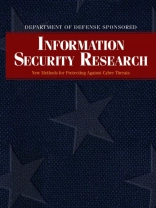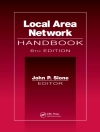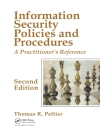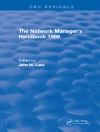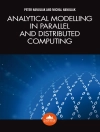* After September 11th, the Department of Defense (Do D) undertook
a massive and classified research project to develop new security
methods using technology in order to protect secret information
from terrorist attacks
* Written in language accessible to a general technical reader,
this book examines the best methods for testing the vulnerabilities
of networks and software that have been proven and tested during
the past five years
* An intriguing introductory section explains why traditional
security techniques are no longer adequate and which new methods
will meet particular corporate and industry network needs
* Discusses software that automatically applies security
technologies when it recognizes suspicious activities, as opposed
to people having to trigger the deployment of those same security
technologies
Зміст
Foreword.
Acknowledgements.
Introduction (Steven King).
Chapter 1. Architecting Information Infrastructures for
Security (Cliff Wang).
1.1 Architectures for Secure and Robust Distributed
Infrastructures.
1.2 A complex Adaptive System Approach to Qo S Assurance and
Stateful Resource Management for Dependable Information
Infrastructure.
1.3 Anomaly and Misuse Detection in Network Traffic
Streams-Checking and Machine Learning Approaches.
1.4 Distributed Systems Security via Logical Framework.
1.5 Distributed Immune Systems for Wireless Networks Information
Assurance.
1.6 Hi-DRA High-Speed, Wide-Area Network Detection, Response,
and Analysis.
Chapter 2. At the Edges of the Critical Information
Infrastructure (David Hislop, Todd Combs).
2.1 Enabling Dynamic Security Management of Networked Systems
via Device-Embedded Security.
2.2 Software Model Checking for Embedded Systems.
2.3 Advanced tool Integration for Embedded System Assurance.
2.4 Verification Tools for Embedded Systems.
Chapter 3. Software Engineering for Assurance (Ralph
Wachter, Gary Toth).
3.1 Static Analysis to Enhance toe Power of Model Checking for
Concurrent Software.
3.2 Protecting COTS from the Inside.
3.3 RAPIDware: Component-Based Development of Adaptive and
Dependable Middleware.
3.4 Generating Efficient Trust Management Software from
Policies.
3.5 Modeling and Simulation Environment for Critical Information
Protection.
Chapter 4. Malicious Mobile Code (Ralph Wachter, Gary
Toth).
4.1 Language-Based Security for Malicious Mobile Code.
4.2 Model-Carrying Code: A New Approach to Mobile-Code
Security.
4.3 Neutralizing Malicious Mobile Code.
Chapter 5. Dependable Critical Information Infrastructure for
Command and Control (Robert Herklotz, Chris Arney).
5.1 Trustworthy Infrastructure, Mechanisms, and Experimentation
for Diffuse Computing.
5.2 Adaptable Situation-Aware Secure Services-Based Systems.
5.3 Detecting Deception in the Military Infosphere: Improving
and Integrating Human Detection Capabilities with Automated
Tools.
5.4 Vulnerability Assessment Tools for Complex Information
Networks.
Про автора
In 2001, the Director of Defense research and Engineering in the Office of the Secretary of Defense initiated an $80 million, five-year research program at U.S. universities in critical infrastructure protection and high confidence adaptable software. Managed by the Department of Defense science offices, these projects produced the results summarized here.
